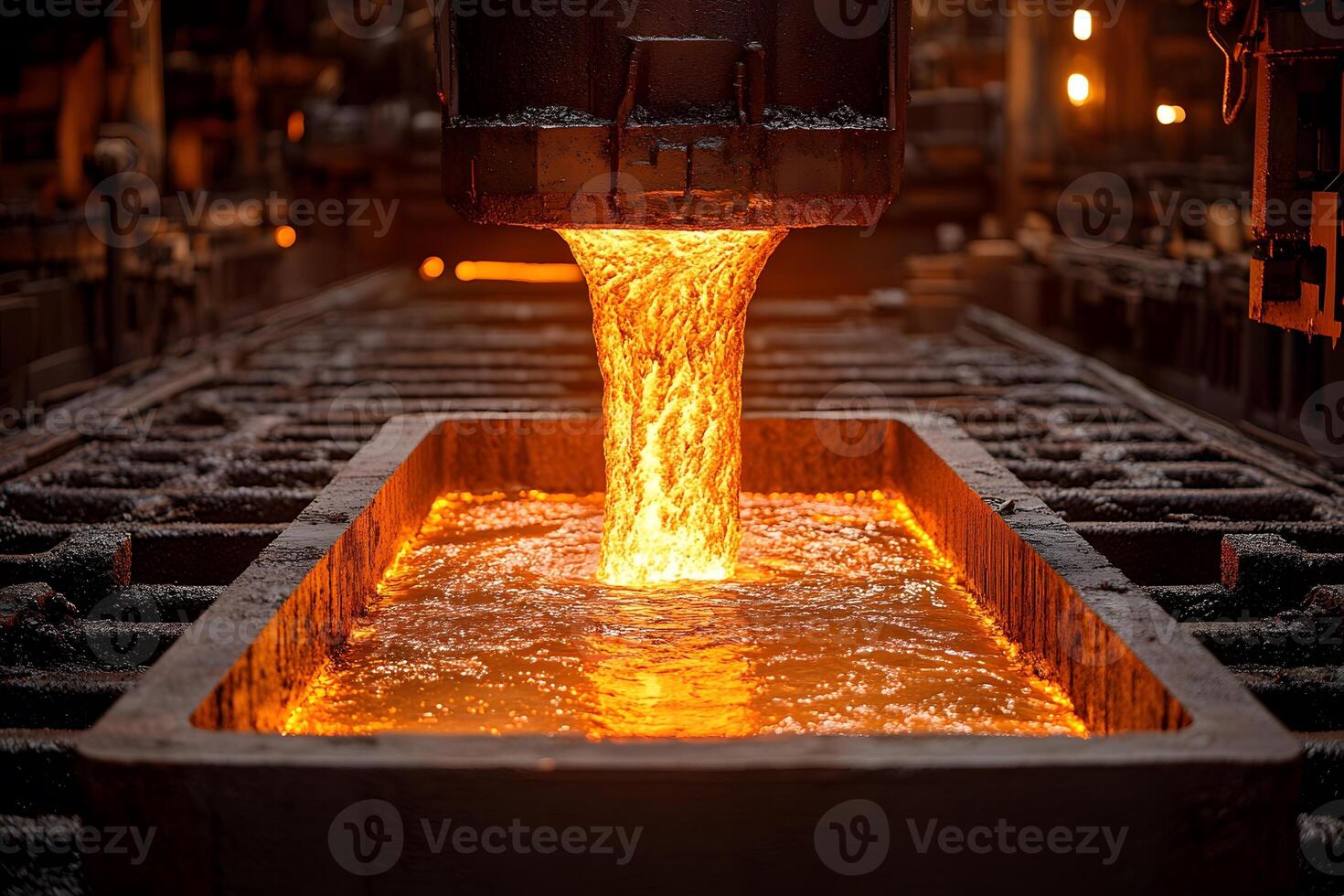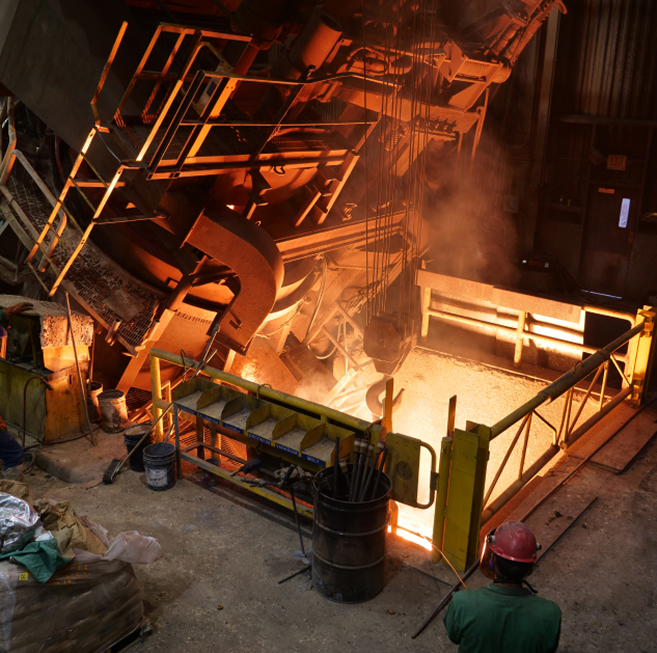The Essential Beginner’s Guide to Understanding a Metal Foundry
Wiki Article
Discovering the Art of Metal Casting: Methods and Applications in Modern Foundries
Metal casting is a time-honored craft that integrates virtuosity with engineering accuracy. From old techniques to modern innovations, this procedure has actually developed significantly. Various approaches, such as sand casting and lost-wax casting, showcase the convenience of the tool. Technologies like 3D printing are improving exactly how factories run. As the lines in between performance and virtuosity blur, one should think about exactly how these growths impact both standard techniques and modern applications. What lies ahead in this advancing landscape?The Principles of Metal Casting
Metal casting, a crucial procedure in production, includes pouring molten steel into a mold and mildew to achieve a desired shape. This technique works as a structure in the production of complex steel components throughout various sectors. Crucial element of metal casting consist of the choice of products, which can range from light weight aluminum to steel, each chosen for its particular buildings and application suitability. The procedure begins with mold development, which can be made from sand, metal, or porcelains, depending upon the casting approach used. The molten steel is after that carefully poured into the mold, where it strengthens and cools. Crucial elements such as temperature level control, cooling price, and mold and mildew design significantly impact the final item's high quality and features. On top of that, understanding the chemical and physical residential properties of the metal help in enhancing casting performance, inevitably improving the efficiency of the production process and making sure premium result customized to certain needs.Conventional Casting Strategies
Conventional casting strategies encompass a variety of methods that have stood the examination of time, demonstrating their performance in creating detailed steel parts. One famous approach is sand casting, which utilizes a mix of sand and a bonding agent to produce mold and mildews. The convenience of sand casting enables the production of varied shapes, making it suitable for both small and large-scale manufacturing. Another significant method is financial investment casting, commonly utilized for precise and complicated geometries. This technique involves producing a wax pattern that is coated in a ceramic shell, which is then heated up to remove the wax, leaving a cavity for liquified metal. In addition, die casting is used for high-volume production, where liquified steel is infused right into reusable steel molds. Each of these standard methods remains relevant, showcasing the workmanship and skill inherent in the art of metal casting, while fulfilling the needs of various sectors.Modern Innovations in Metal Casting
As industries evolve, advancements in steel casting are improving production procedures and boosting efficiency. Advanced innovations such as 3D printing and computer-aided design (CAD) are revolutionizing mold and mildew production, permitting detailed styles that were previously unattainable. These approaches help with rapid prototyping, promoting and decreasing lead times creative thinking in product advancement.Additionally, the combination of automation and robotics in shops is enhancing procedures, decreasing human mistake, and boosting security. Smart sensing units and real-time tracking systems enable precise control of temperature level and product buildings, ensuring better results.
Moreover, lasting techniques are arising, with the use of energy-efficient heating systems and recycled products, lowering ecological impact. The adoption of composite products and innovative alloys is additionally broadening the opportunities of steel casting, resulting in stronger and lighter components. Generally, these modern technologies are transforming steel casting into a more reliable, accurate, and eco accountable industry.
Applications Throughout Numerous Industries

While varied sectors increasingly rely on metal casting, the strategy's flexibility plays a crucial function in meeting details application needs. In the automotive industry, metal casting is crucial for generating engine parts, transmission real estates, and other detailed components that need accuracy and sturdiness. The click for info aerospace sector take advantage of light-weight casted parts, guaranteeing both performance and gas efficiency. Additionally, the building industry makes use of steel casting for structural components, such as beam of lights and sustains, improving the honesty of buildings and bridges.
The energy sector employs steel casting for turbine blades and other substantial machinery that must withstand extreme conditions. Clinical devices likewise see applications of metal casting, particularly in medical instruments and prosthetics, where precision is essential - Aluminum Foundry. On the whole, the versatility and reliability of steel casting make it indispensable across different areas, adding to the development of technology and infrastructure in modern-day culture
The Artistic Side of Metal Casting
Although typically related to industrial applications, steel casting likewise discovers its place in the domain name of art, where experienced craftsmens transform molten steel into complex designs and expressive sculptures. This imaginative side of metal casting encompasses diverse strategies, consisting of sand casting, lost-wax casting, and investment casting, each offering distinct opportunities for creativity. Artists use these methods to generate works that vary from abstract types to lifelike depictions, permitting for personal expression and discourse on modern problems.
Often Asked Questions
What Precaution Are Essential in a Metal Casting Factory?
Important safety measures in a metal casting shop include personal safety equipment, correct air flow, emergency protocols, training in dealing with liquified steels, normal devices maintenance, and clear communication of hazards to guarantee worker security and wellness. Metal Foundry.Exactly How Do Ecological Regulations Impact Metal Casting Processes?
Environmental regulations considerably affect metal casting procedures by mandating making use of cleaner technologies, lowering exhausts, and promoting waste administration practices. Conformity often calls for investments in devices, training, and modifications to existing procedures to reduce ecological effect.What Are the Typical Defects in Metal Castings?
Usual issues in metal castings consist of porosity, shrinkage, incorporations, and misruns. These problems can develop from improper mold and mildew layout, poor temperature level control, or my blog contamination, eventually affecting the structural integrity and overall high quality of the end product.How Is Waste Managed During Metal Casting Manufacturing?
Waste informative post management in steel casting production involves reusing scrap steel, executing efficient material use, and making use of sophisticated innovations to reduce waste. Shops embrace techniques like sand improvement and appropriate disposal methods to minimize environmental impact.What Job Opportunities Exist in the Metal Casting Industry?
The metal casting sector supplies diverse career possibilities, consisting of roles such as shop manager, metallurgical designer, quality assurance examiner, pattern manufacturer, and manufacturing supervisor, satisfying different ability and know-how in making processes.Metal casting, a pivotal process in production, includes putting liquified metal right into a mold and mildew to achieve a preferred shape. In addition, die casting is used for high-volume production, where liquified steel is infused right into multiple-use metal molds. While varied markets increasingly count on metal casting, the method's versatility plays an important role in conference certain application demands. Commonly associated with industrial applications, metal casting also locates its location in the domain of art, where knowledgeable craftsmens transform molten metal right into meaningful sculptures and complex styles. Waste administration in metal casting production includes recycling scrap metal, applying efficient product use, and using innovative modern technologies to decrease waste.
Report this wiki page